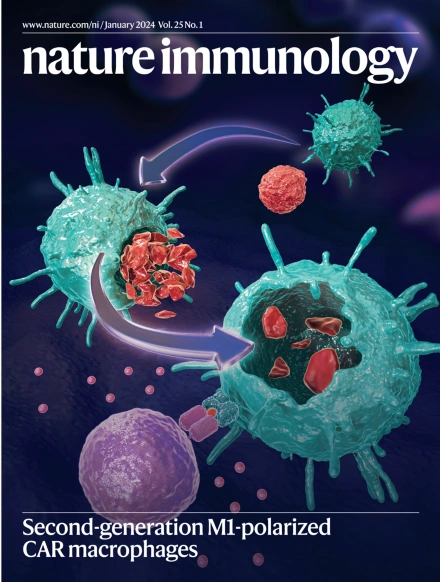Tonic type I interferon signaling optimizes the antiviral function of plasmacytoid dendritic cells.
IF 27.6
1区 医学
Q1 IMMUNOLOGY
引用次数: 0
Abstract
Plasmacytoid dendritic cells (pDCs) mount powerful antiviral type I interferon (IFN-I) responses, yet only a fraction of pDCs produces high levels of IFN-I. Here we report that peripheral pDCs in naive mice comprise three subsets (termed A, B and C) that represent progressive differentiation stages. This heterogeneity was generated by tonic IFN-I signaling elicited in part by the cGAS/STING and TLR9 DNA-sensing pathways. A small 'IFN-I-naive' subset (pDC-A) could give rise to other subsets; it was expanded in STING deficiency or after the IFN-I receptor blockade, but was abolished by exogenous IFN-I. In response to RNA viruses, pDC-A showed increased Bcl2-dependent survival and superior IFN-I responses, but was susceptible to virus infection. Conversely, the majority of pDCs comprised the 'IFN-I-primed' subsets (pDC-B/C) that showed lower IFN-I responses and poor survival, but did not support virus replication. Thus, tonic IFN-I signaling decreases the cytokine-producing capacity and survival of pDCs but increases their virus resistance, facilitating optimal antiviral responses.补益型干扰素信号优化浆细胞样树突状细胞的抗病毒功能。
浆细胞样树突状细胞(pDCs)产生强大的抗病毒I型干扰素(IFN-I)反应,但只有一小部分pDCs产生高水平的IFN-I。在这里,我们报告了幼稚小鼠的外周pDCs包括三个亚群(称为A, B和C),代表了进行性分化阶段。这种异质性是由cGAS/STING和TLR9 dna传感途径部分引发的IFN-I信号传导所产生的。一个小的“ifn - i幼稚”子集(pDC-A)可能会产生其他子集;它在STING缺乏或IFN-I受体阻断后扩增,但被外源性IFN-I消除。对于RNA病毒,pDC-A表现出更高的bcl2依赖性生存和更好的IFN-I应答,但对病毒感染敏感。相反,大多数pdc包含“IFN-I引物”亚群(pDC-B/C),显示出较低的IFN-I应答和较差的存活率,但不支持病毒复制。因此,补过的IFN-I信号传导降低了pDCs的细胞因子生产能力和存活,但增加了它们的病毒抗性,促进了最佳的抗病毒反应。
本文章由计算机程序翻译,如有差异,请以英文原文为准。
求助全文
约1分钟内获得全文
求助全文
来源期刊

Nature Immunology
医学-免疫学
CiteScore
40.00
自引率
2.30%
发文量
248
审稿时长
4-8 weeks
期刊介绍:
Nature Immunology is a monthly journal that publishes the highest quality research in all areas of immunology. The editorial decisions are made by a team of full-time professional editors. The journal prioritizes work that provides translational and/or fundamental insight into the workings of the immune system. It covers a wide range of topics including innate immunity and inflammation, development, immune receptors, signaling and apoptosis, antigen presentation, gene regulation and recombination, cellular and systemic immunity, vaccines, immune tolerance, autoimmunity, tumor immunology, and microbial immunopathology. In addition to publishing significant original research, Nature Immunology also includes comments, News and Views, research highlights, matters arising from readers, and reviews of the literature. The journal serves as a major conduit of top-quality information for the immunology community.
 求助内容:
求助内容: 应助结果提醒方式:
应助结果提醒方式:


